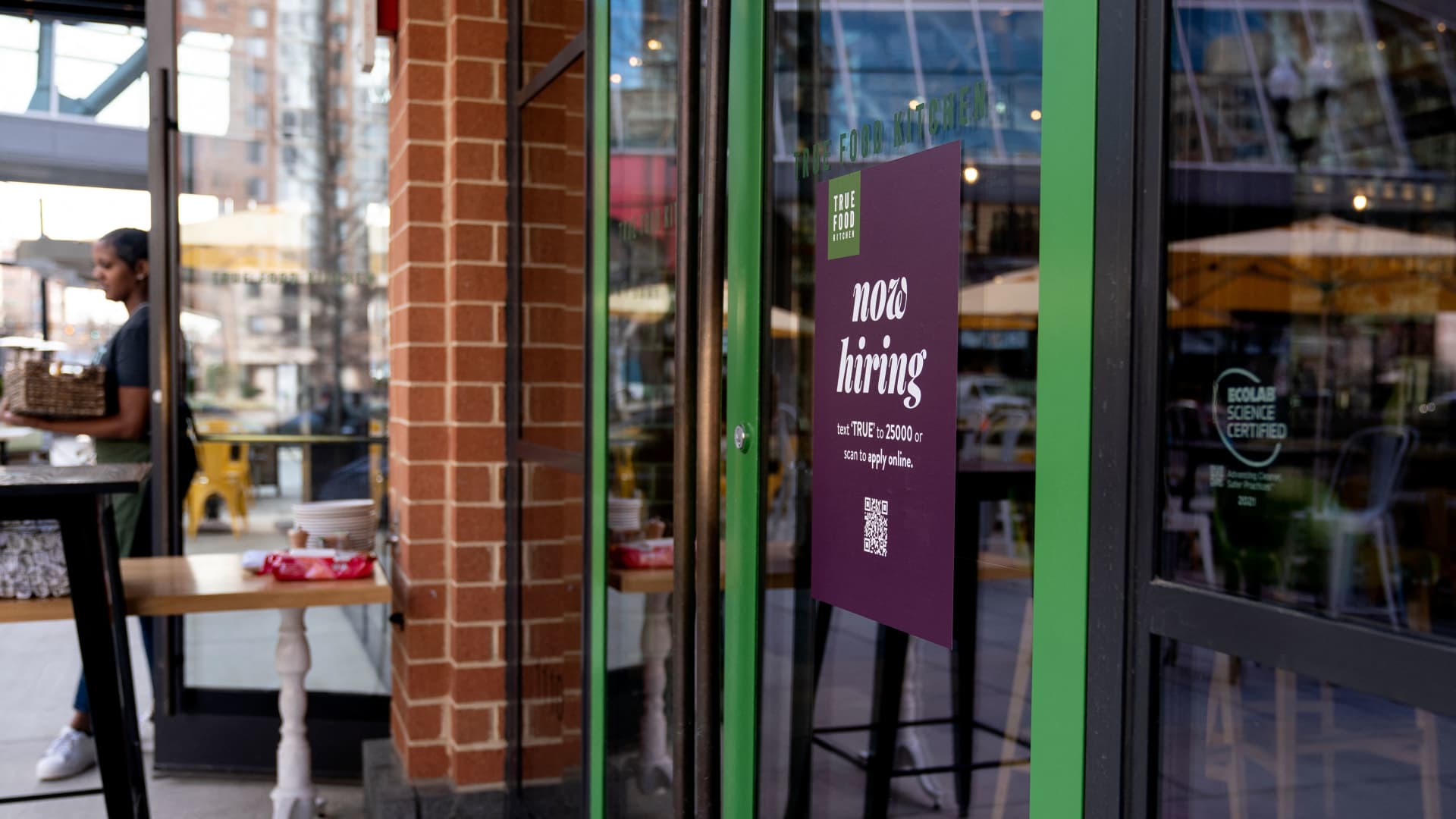The pandemic-era trend known as the “Great Resignation” remains a prominent feature of the labor market, as favorable conditions lead workers to quit their jobs at near-record levels in search of better (and ample) opportunities elsewhere.
Nearly 4.4 million Americans quit their jobs in February, the U.S. Department of Labor said Tuesday.
That’s about 100,000 more people than quit in January, and just shy of the 4.5 million record set in November.
“These quits are still extremely high and that shows the Great Resignation is still in full swing,” said Daniel Zhao, senior economist at the career site Glassdoor.
The high demand for workers shows little sign of abating but may have plateaued, he added.
“It wouldn’t be a surprise to see that cool down in 2022,” Zhao said. “But that’s not to say we should expect the Great Resignation to disappear overnight.”
‘Quits’ and job openings
Resignations, or “quits” — which are generally voluntary separations initiated by workers — serve as a measure of employees’ willingness or ability to leave jobs, according to the Labor Department.
Job openings, like resignations, have also lingered near record highs, helping fuel workers’ confidence in finding new gigs elsewhere.
There were 11.3 million job openings in February — essentially unchanged from January and down slightly from December’s record of more than 11.4 million.
Job openings reflect employer demand for workers and tend to move up and down with resignations, Zhao said.
The layoff rate — a measure of layoffs relative to the overall level of employment — also remains near historic lows, at 0.9% in February.
The layoff rate has been at or under 1% for the past year. It hadn’t previously touched 1% since record keeping started in 2000.
Meanwhile, 202,000 people filed a new claim for unemployment benefits last week, the Labor Department said Thursday. That trend is below the historical average, said Robert Frick, corporate economist at Navy Federal Credit Union.
The U.S. unemployment rate fell to 3.8% in February, its lowest level since February 2020. The Labor Department is issuing its March jobs report on Friday.
Demand for workers
These data points — “quits,” job openings, layoffs and benefits — reflect a job market that’s been strong for workers.
Employer demand for labor picked up steam in the spring and early summer 2021, as Covid-19 vaccines started rolling out broadly in the U.S. and the economy began emerging from its pandemic hibernation.
That high demand has outpaced the ready supply of workers, and businesses have raised wages at their fastest clip in years to compete for talent. Others have expanded their hiring pool.
“There is a brutal battle for lower-skilled employees occurring,” Ron Hetrick, senior economist at Emsi Burning Glass, a job market analytics firm, said. “Companies that usually require college degrees are starting to drop those requirements, meaning they’re now entering into the fray to find the same worker that other companies have trouble hiring.”
Most people who quit are switching jobs rather than leaving the labor force altogether, according to Nick Bunker, an economist at job site Indeed. The number of people hired in February exceeded resignations by about 2.3 million people, the Labor Department said.
Plateau?
However, there are signs the Great Resignation trend may have topped out at the end of 2021. Resignations and job openings seem to be plateauing, a sign that employer demand may wane throughout 2022, Zhao said.
The Federal Reserve, the U.S. central bank, started raising its benchmark interest rate in March (which will raise borrowing costs for companies and households). The Fed is aiming to cool off the economy and rein in inflation, which is running at a 40-year high. The war in Ukraine may also have dampening effect on the economy.
“It’s possible that with the benefit of hindsight, we’ll say December 2021 was the peak of employer demand in this cycle, before rate hikes, geopolitical uncertainty and other risk factors slowed the economy,” Zhao said.
“[But] as long as employer demand remains high, I fully expect the Great Resignation to continue,” he added.
